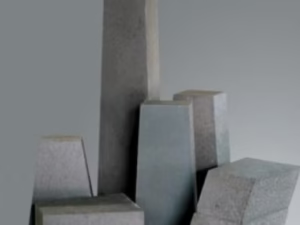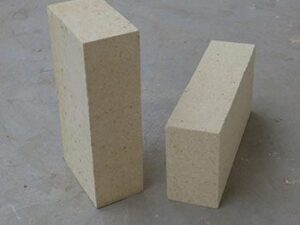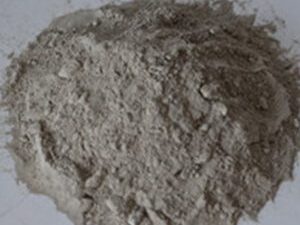Description
Corundum Refractories: Strength and Stability at the Hottest Temperatures
In the demanding world of high-temperature industrial processes, refractory materials play a crucial role in containing and channeling heat. Among the most robust and reliable of these materials are corundum refractories, renowned for their exceptional heat resistance, chemical inertness, and superior mechanical strength. These properties make them essential components in a range of applications where other refractories fall short.
What is Corundum?
Corundum is the crystalline form of aluminum oxide (Al₂O₃). In its pure form, it is a colorless mineral. However, trace amounts of impurities give rise to the treasured gemstones ruby (chromium) and sapphire (various other transition metals). In its manufactured form for refractory applications, corundum is prized for its high melting point (over 2000°C or 3632°F), hardness, and resistance to chemical attack.
Understanding Corundum Refractories
Corundum refractories are materials composed primarily of corundum, typically exceeding 90% Al₂O₃ content. They can be manufactured using either fused alumina (produced by melting bauxite in an electric arc furnace) or sintered alumina (produced by heating bauxite at a lower temperature). The choice between these processes impacts the final properties of the refractory, with fused alumina generally yielding a denser and more chemically resistant product.
Key Properties of Corundum Refractories:
- Exceptional High-Temperature Strength: Retain significant strength even at temperatures approaching their melting point. This is critical for structural integrity in high-stress environments.
- Excellent Chemical Inertness: Highly resistant to attack by acids, alkalis, and molten metals, making them ideal for aggressive chemical environments.
- High Thermal Conductivity: Facilitates efficient heat transfer while maintaining structural integrity.
- Excellent Thermal Shock Resistance: Withstand rapid temperature changes without cracking or spalling (though this can vary depending on the specific formulation and grain size).
- High Abrasion Resistance: Durable and resistant to wear, even in applications involving high-velocity gases or abrasive materials.
- High Creep Resistance: Exhibit minimal deformation under sustained high-temperature loading.
Applications of Corundum Refractories:
The unique combination of properties offered by corundum refractories makes them indispensable in a wide array of demanding industries:
- Steelmaking: Lining of furnaces, ladles, and tundishes, particularly for handling highly aggressive steel grades.
- Glass Manufacturing: Construction of furnace linings, particularly in areas exposed to molten glass attack.
- Petrochemical Industry: Lining of reactors and other high-temperature equipment exposed to corrosive environments.
- Cement Production: Critical components in rotary kilns.
- Waste Incineration: Handling the high temperatures and corrosive gases produced during waste combustion.
- High-Temperature Ceramics: Supports and setters for firing high-performance ceramics.
- Rocket Engine Nozzles: Components requiring extreme heat resistance and strength.
- Electronics Industry: Crucibles for melting and processing high-purity materials.
Advantages and Disadvantages:
Advantages:
- Superior Performance in Extreme Conditions: Enables processes that would be impossible or impractical with other refractories.
- Longer Service Life: Reduces downtime and replacement costs due to their durability.
- Improved Process Efficiency: Facilitates efficient heat transfer and containment, leading to energy savings.
Disadvantages:
- Higher Cost: More expensive than other common refractory materials like fireclay or silica.
- Difficult to Machine: Due to its hardness, machining corundum requires specialized equipment and techniques.
- Susceptible to Thermal Shock in Certain Formulations: Careful selection of the appropriate grade and installation techniques are crucial to avoid damage.
Conclusion:
Corundum refractories represent the pinnacle of high-temperature performance. While their higher cost may be a factor, their exceptional properties and long service life often make them the most cost-effective solution in the long run, particularly in applications where reliability and durability are paramount. As industries continue to push the boundaries of high-temperature processing, corundum refractories will remain an essential material, enabling advancements and ensuring operational efficiency in the face of extreme conditions.















Reviews
There are no reviews yet.